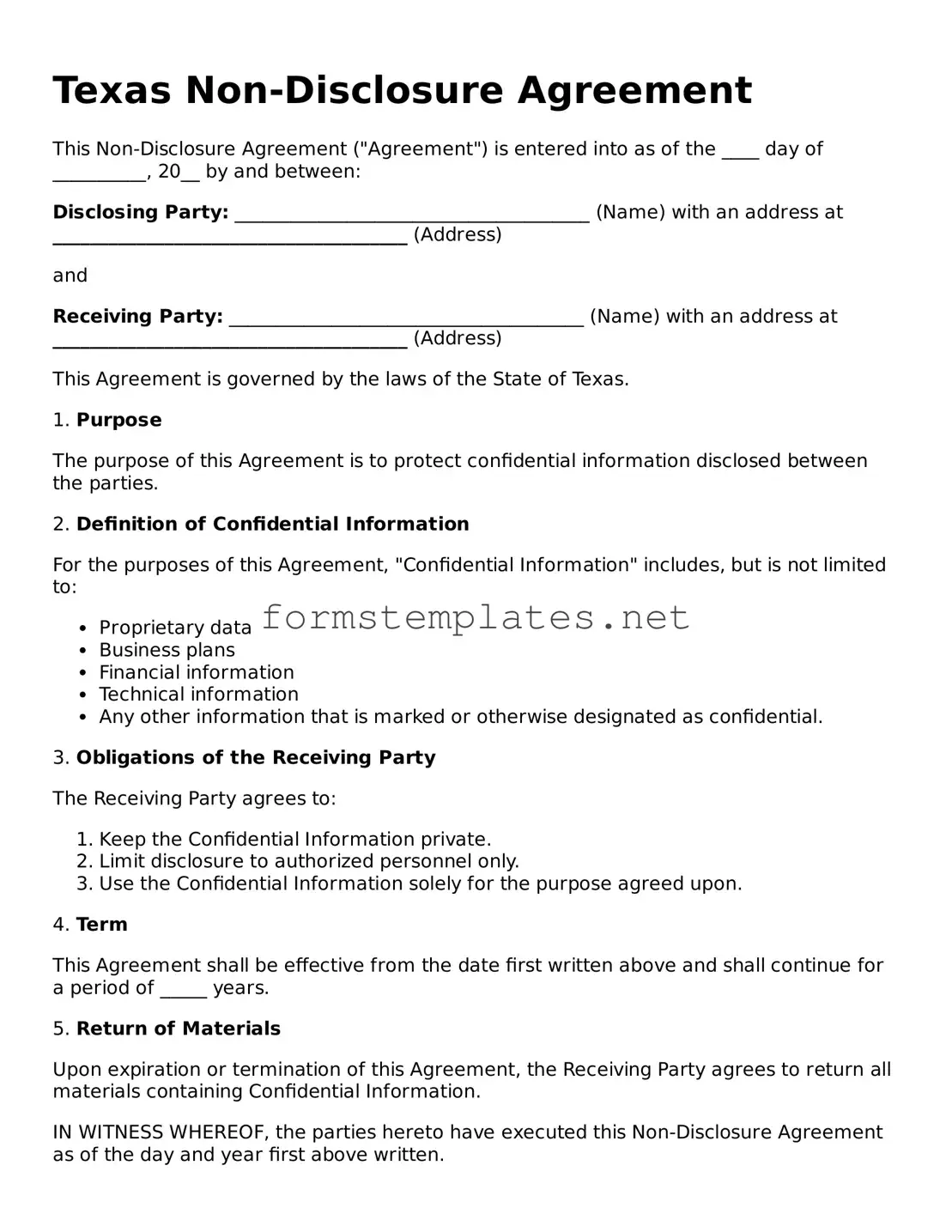Texas Non-Disclosure Agreement
This Non-Disclosure Agreement ("Agreement") is entered into as of the ____ day of __________, 20__ by and between:
Disclosing Party: ______________________________________ (Name) with an address at ______________________________________ (Address)
and
Receiving Party: ______________________________________ (Name) with an address at ______________________________________ (Address)
This Agreement is governed by the laws of the State of Texas.
1. Purpose
The purpose of this Agreement is to protect confidential information disclosed between the parties.
2. Definition of Confidential Information
For the purposes of this Agreement, "Confidential Information" includes, but is not limited to:
- Proprietary data
- Business plans
- Financial information
- Technical information
- Any other information that is marked or otherwise designated as confidential.
3. Obligations of the Receiving Party
The Receiving Party agrees to:
- Keep the Confidential Information private.
- Limit disclosure to authorized personnel only.
- Use the Confidential Information solely for the purpose agreed upon.
4. Term
This Agreement shall be effective from the date first written above and shall continue for a period of _____ years.
5. Return of Materials
Upon expiration or termination of this Agreement, the Receiving Party agrees to return all materials containing Confidential Information.
IN WITNESS WHEREOF, the parties hereto have executed this Non-Disclosure Agreement as of the day and year first above written.
______________________________
(Signature of Disclosing Party)
______________________________
(Signature of Receiving Party)
